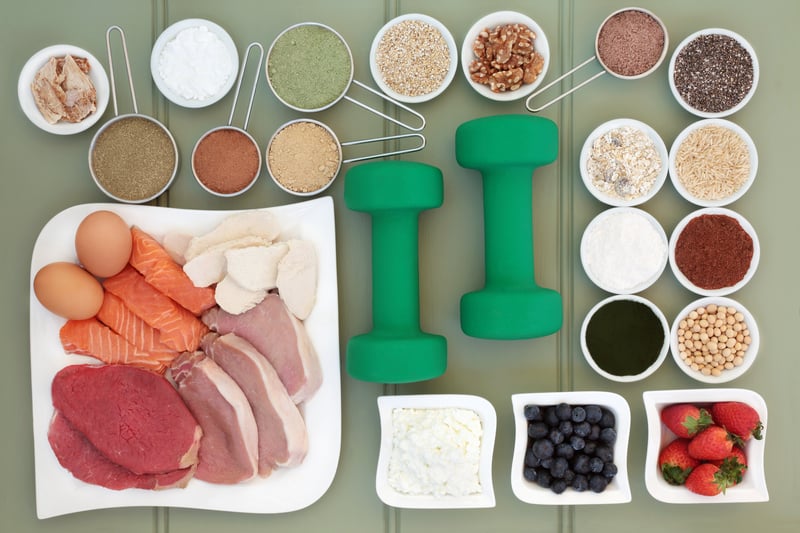How to Reset Your Metabolism (Follow These 7 Rules)

Do you need to reset your metabolism? You may have done some damage over the years with excessive or yoyo dieting, not eating enough, or even eating too much. Now you’re feeling sluggish, and you’re not sure what to do. Can you reset your metabolism and get back on track toward healthy and fit again?
The answer is a resounding yes! You can reset your metabolism in a few simple (but not necessarily easy) steps, here’s how:
What is a Metabolism, Anyway?
Before we get into how to reset your metabolism, you may be curious about what your metabolism is and how it works. According to the definition by Britannica.com, your metabolism is defined as follows:
“Metabolism, the sum of the chemical reactions that take place within each cell of a living organism and that provide energy for vital processes and for synthesizing new organic material.”
In other words, your metabolism is how you use (turn into energy) and how quickly you process the foods you eat. If you eat more than the number of calories you use (burn) each day, you will put on body fat. If you burn greater calories than you take in, you will lose weight.
That said, the number of calories you need to survive and how you use them (your metabolism) is not a static number, and there are things you can do to boost your burn!
7 Steps to Reset Your Metabolism
1. Eat Plenty of Protein
Since your body requires calories to process and digest protein, it makes sense to include some with every meal. And protein is a vital ingredient when it comes to building muscle. Most of us don’t get enough protein in our daily diets, and this can be partly to blame for a sluggish metabolism.
What’s another added bonus of getting enough protein in your diet? Protein makes you feel full and satisfied. That means you’ll naturally fuel up on the good stuff and take in less calories overall to boot.
2. Build Muscle with Resistance
Why build muscle and what does it have to do with your metabolism? Muscle, unlike body fat, is what’s called “metabolically active.” That means that it requires calories (energy) to maintain itself.
Ever heard the term “feed the muscle”? You’ve heard that because your base metabolic rate (BMR) is how many calories your body needs to survive at rest. Throw in some activity and some additional muscle mass and you’ve just upped your caloric requirements by a lot. Feed the muscle, keep the muscle. More muscle equals more calories needed to survive, i.e., a higher metabolism.
3. Ditch the Yo-Yo Dieting
Crazy fad diets will have you losing water weight and hard-earned muscle mass over body fat. And, less muscle means a slower metabolism. When your body doesn’t get enough calories, it panics and thinks you’re going to starve, thus sending it into what’s called “starvation mode.” And what happens when you’re in starvation mode? You guessed it, your metabolism slows waayy down to conserve energy.
If you need to restrict calories, consider incorporating intermittent fasting into your diet plan. And when you are eating, consume whole healthy foods with plenty of protein, fiber, and nutrients that will leave you satiated and energized.
4. Spice Up Your Diet
And, speaking of diet, you can take advantage of short-term metabolism boosts that can come from spicy foods, green tea, and black coffee. These choices contain metabolism-friendly compounds like capsaicin, catechins, and caffeine, which can help speed up the metabolism for hours after consumption.
5. Get Your Sleep On
Good quality sleep is a must if you want to reset your metabolism. According to a study in the Annals of Internal Medicine, getting less sleep means a slower metabolism and less fat loss. Scientists at the University of Chicago’s General Clinical Resource Center did a study in which participants were put on a balanced, restricted calorie diet for 28 days. For 14 days, the dieters were allowed 8.5 hours of sleep. For the remaining 14 days, their sleep cycles were shortchanged, culminating in only 5.5 hours of sleep.
What happened?
During the 2 weeks with adequate sleep, participants lost an average of 3.1 pounds of fat and 3.3 pounds of fat-free body mass (meaning the loss was mostly muscle mass) for a total of 6.6 pounds.
However, during the weeks with inadequate sleep, they only ended up losing about 1.3 pounds of body fat with the remaining 5.3 pounds coming from fat-free body mass.
This translates to a huge conclusion: if you want to reset your metabolism and maximize your fat loss, do yourself a favor and get your zzzzzzzs.
Not only do you lose less body fat when you get less than eight hours of sleep, but your hunger hormone (ghrelin) kicks in and can makes you hungrier than you normally would be if you were running on a full eight hours of sleep. This can lead to unwanted binge eating and low energy levels.
6. Add Some Cardio
Picking up the pace can do wonders for your metabolism. Not only should you throw in some high intensity interval training (HIIT) now and then to really boost your system, science shows that if you engage in vigorous cardiovascular exercise for a moderate amount of time (like 45 minutes), you can reap the benefits of a temporarily increased metabolism for up to 14 hours after exercising. Now that’s just working smarter!
7. Stay NEAT
No, I’m not talking about clearing out the clutter. NEAT stands for non-exercise activity thermogenesis, which is the energy we use just going about our normal lives. Energy we use when we walk to work, mow the lawn, or fidget while watching TV. Even minor activities can greatly increase metabolic rate and add up to increased calorie burning throughout the day. For example, you can increase NEAT by standing when you’re on your computer, having walking meetings, or simply fidgeting more to boost the burn.




 7 Signs Your Body is Seriously Low on Collagen (not just wrinkles)
7 Signs Your Body is Seriously Low on Collagen (not just wrinkles) Health Expert: "Turmeric Doesn't Work (unless...)"
Health Expert: "Turmeric Doesn't Work (unless...)" 3 Warning Signs Your Probiotic Supplement is a Total Waste
3 Warning Signs Your Probiotic Supplement is a Total Waste

